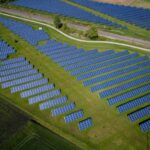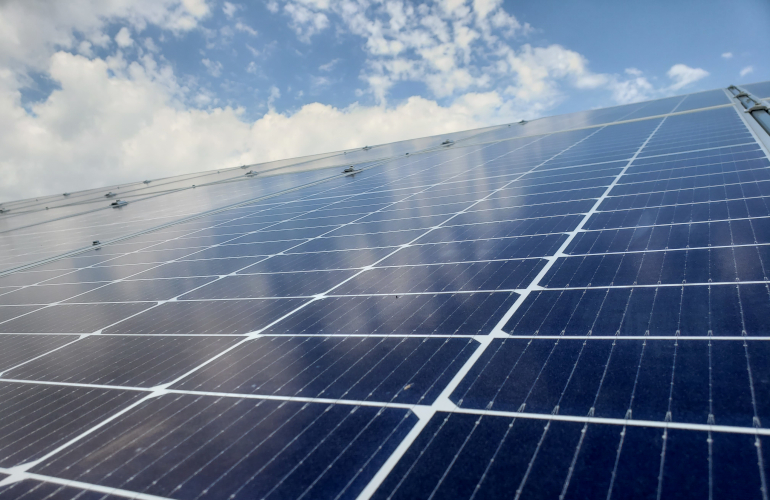Over 70% of utility-scale electricity resources added in 2020 was renewable energy
The SUN DAY Campaign has reviewed FERC data to find that renewable energy sources (which include biomass, geothermal, hydropower, solar and wind) accounted for over 70% (14,734 MW) of the 20,803 MW of new utility-scale electrical generating capacity added in the first 11 months of 2020. Wind (8,042 MW) and solar (6,485 MW) have each contributed more new generating capacity than has natural gas (6,039 MW).
FERC’s latest monthly “Energy Infrastructure Update” report (with data through November 30, 2020) also reveals that natural gas accounted for 29% of the total, with very small contributions by coal (20 MW), oil (5 MW), and “other” sources (5 MW) providing the balance. There have been no new capacity additions by nuclear power or geothermal energy since the beginning of the year.
Moreover, all new generating capacity added during June through November was provided by wind (2,987 MW), solar (2,218 MW), and hydropower (24 MW). In November alone, all new U.S. utility-scale electrical generation capacity added was attributable to five new units of wind (882 MW) and ten units of solar (626 MW).
Renewable energy sources now account for 23.52% of the nation’s total available installed generating capacity and continue to expand their lead over coal (19.97%). Wind’s share (9.42%) of generating capacity has now surpassed that of nuclear power (8.61%), while solar (4.16%) has edged out oil (3.31%). The generating capacity of wind and solar is now 13.58% of the nation’s total — not including distributed (rooftop) solar.
Five years ago, FERC reported that installed renewable energy generating capacity was 17.53% of the nation’s total with wind at 6.03% (now 9.42%) and solar at 1.16% (now 4.16%). By comparison, in August 2015, coal’s share was 26.42% (now 19.97 %), nuclear was 9.18% (now 8.61%), and oil was 3.86% (now 3.31%). Only natural gas has shown any growth among non-renewable sources — expanding modestly from a 42.84% share five years ago to 44.41% today.
FERC data also suggests that renewables’ share of generating capacity is on track to increase significantly over the next three years. “High probability” generation capacity additions for wind, minus anticipated retirements, reflect a projected net increase of 27,622 MW, while solar is foreseen growing by even more — 32,784 MW. By comparison, net growth for natural gas will be only 21,489 MW. Thus, wind and solar combined are forecast to provide nearly three-times as much new generating capacity as natural gas over the next three years.
While hydropower, geothermal, and biomass also are all projected to experience net growth (1,018 MW, 178 MW and 105 MW, respectively), the generating capacities of coal and oil are projected to plummet — by 22,621 MW and 5,055 MW respectively. In fact, FERC reports no new coal capacity in the pipeline over the next three years and just 6 MW of new oil-based capacity. Nuclear power is likewise forecast to drop sharply — by 4,330 MW, or more than 4% of its currently operating capacity.
In total, the mix of all renewables will add more than 61,707 MW of net new generating capacity to the nation’s total by November 2023 while the net new capacity from natural gas, coal, oil, and nuclear power combined will actually drop by more than 10,500 MW .
If FERC’s projections prove accurate, over the next three years, renewable energy generating capacity should account for comfortably more than a quarter of the nation’s total available installed generating capacity — increasing from 23.52% today to 27.46% in three years. Meanwhile, coal’s share will drop to 17.37% (from 19.97% today), nuclear to 7.92% (from 8.61%), and oil to 2.78% (from 3.31%). Natural gas’ share will also dip slightly to 44.31%, compared to 44.41% now.
“FERC’s projections for strong growth by renewable energy sources, especially solar and wind, may very well prove to be unduly modest,” noted Ken Bossong, Executive Director of the SUN DAY Campaign. “With a very supportive incoming Biden Administration, coupled with Democratic majorities in the U.S. Senate and House of Representatives, this trend should not only continue but rapidly accelerate during the next few years.”
News item from SUN DAY
<!–
–>
Original Source: https://www.solarpowerworldonline.com/2021/01/over-70-of-utility-scale-electricity-resources-added-in-2020-were-renewable-energy/















